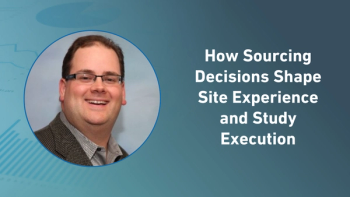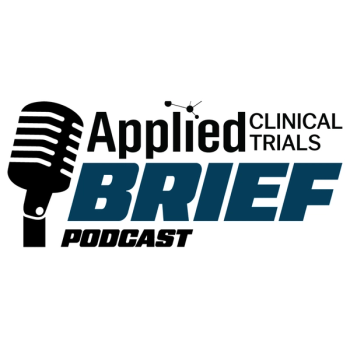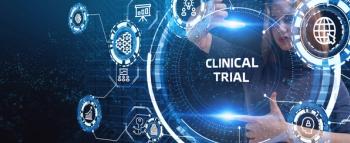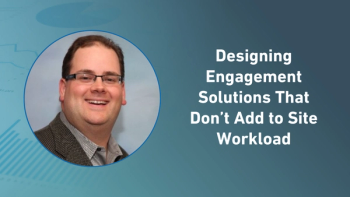
SCOPE Summit 2025: AI/ML’s Impact in Patient Care
In an interview with ACT senior editor Andy Studna at SCOPE Summit, Rajneesh Patil, vice president, digital innovation, IQVIA, highlights the impact of artificial intelligence/machine learning in improving outcomes and maintaining safety with its implementation.
ACT: At the end of the day, it has to matter how these artificial intelligence/machine learning (AI/ML)-driven solutions are aiding in improving patient health outcomes. Where are you seeing a tangible impact in patient care?
Patil: For years now, I think we've been talking about patient centricity. As an industry, as companies, I think there is a level of digital health technology evolution that's happening today in terms of direct to patient in terms of variable sensors, devices, connected devices that can help change the face of how data collection is done in clinical trials today, so that's one area where the patient journey impact of how we even bring a patient into a trial. Are we doing disease detection algorithms better so that we can identify disease burden early in the game, so we can connect to patients the clinical trial options as a care option, which is a big shift that we need to do in the industry. I think AI is helping that conversation, but also in general, the user experience for patients who are participating in trials. We've started in the industry now as common terminology and when a protocol is written measuring patient burden, how do you do that? With your past experience, with the machine learning algorithms of all the data, how long does it take for a patient, for each single site to visit on a trial? I was on a study more recently, where we were designing the protocol, helping the customer, and also learning from them. There was a visit, for example, which was eight hours long, and these are sick patients, so how do we reduce the burden of that visit? By introducing some of the direct to patient elements, home healthcare, nursing into the mix. Telemedicine has been around for a while. COVID helped it peak, so there are those technologies which enable, through AI and intelligence, we can improve the way trial participants are coming into the clinical trials, but also their engagement through the trial period, so that's one area I think we are very focused on improving patient journeys.
ACT: As trial sponsors, CROs and other industry stakeholders work to closely examine the potential of AI/ML for clinical trial success while maintaining patient and data safety and risk mitigation, how much will individual companies and groups need to break down information silos and discuss both benefits and concerns of expanding AI/ML use in clinical R&D?
Patil: There's so many layers to that question. We all realize the how loaded that question is, so let me deal with it in three parts. One is exactly like you said, the data silos and functional silos are fine. They were born because of a reason. They were all created to serve one process achieve, one outcome, but as we're seeing, the need for interoperability and integration, meaning data entered in one system, why is it not populating in all the other systems on a study? Basic question, some of the other industries are probably a little more evolved we see. Fintech is an example. Retail is an example. There's a huge opportunity there for us to break down those silos from a data consumption perspective. Breaking down the silos is a good concept, but why and what is the objective driving it will help us get there quicker, smarter, and kind of cheaper, so a lot of technology companies are helping us solve that. The second layer to that is, I think the operational workflow layer, again, the way we build processes in our industry, there's a lot of handoffs. There's a lot of friction when handoffs happen. They're not designed to have friction, but friction happens when there are handoffs, so how do we seamlessly bring some of the workflows together? That's what is the true power of integrating some of the processes and that, again, will help break down silos between, let's say, startup and feasibility. There's a bunch of risks identified there. Does it get carried through to the conduct phase? Does it get carried through the closeout phase? That continuum is something we can use to break down the silos. The third one is something we are exploring very, very dearly to my heart, around the regulatory influence on how some of these models, the delivery models, work and we had the opportunity to talk to a regulatory agency in September, October, on the use of AI in clinical development and their feedback was, I was not surprised, but I was sharing with a lot of my industry colleagues, who, typically, we have the tendency to think regulatory constraints might bog us down, but at the other hand, this interaction helped us actually appreciate that regulatory is actually waiting for us with our sponsors to go to them with new models, show them, of course, the guardrails within which we are operating. What are the risks and how are we mitigating them? FDA released this paper two weeks ago on guidance for AI usage in clinical. There is a seven-step process there on how you can build responsible AI, so using those as catalysts for operationalizing some of the AI capabilities. We are looking to further break down these types of silos, interoperability, integrations, more value creation is waiting at the other end of that, but it will take some effort in the initial days to be able to actually break down the silos, get some of these teams together, get some of our technologies talking to each other, under the back of which we can then harness it with AI. AI by itself will not create the value. The value will come from the data and the processes we have laid out to help us harness that power.
Newsletter
Stay current in clinical research with Applied Clinical Trials, providing expert insights, regulatory updates, and practical strategies for successful clinical trial design and execution.




